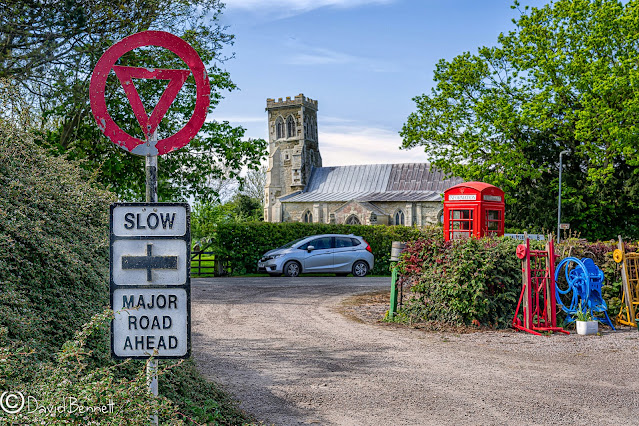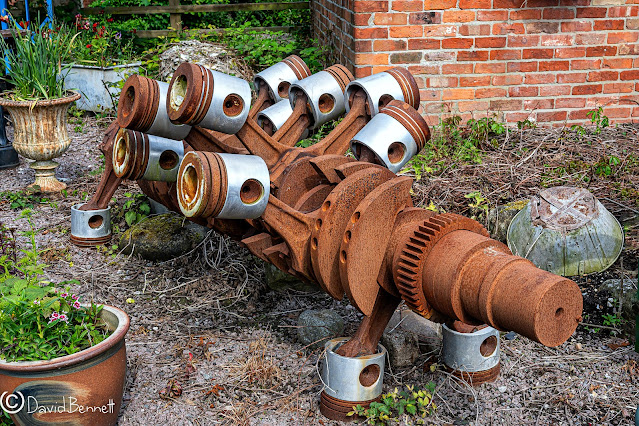Caphouse Colliery, Yorkshire.
A few years ago I visited Caphouse Colliery, originally known as Overton Colliery, near Wakefield in Yorkshire. It was worked from the 18th century mining coal until it was closed in 1985. It re-opened in 1988 as the Yorkshire Mining Museum, and later became the National Mining Museum for England.
At the time we had a Cavalier King Charles dog called Suzi, that needed an MRI scan and we had to take her to Dewsbury for it, which isn't far from the mining museum. We left our dog there for the scan, the process would take a few hours as she would need to be sedated. My son Michael had driven me there so we decided to visit the mining museum. Son Michael is a keen photographer like myself.
I've posted the photo's from the visit before but, as I haven't any current pictures, decided to post them again.
 |
There was a reconstruction of a typical miners cottage as you passed through the reception
area. Very plain and basic with an outside toilet, I liked the cricket bat propped up against
the wall. Yorkshire is a proud cricket county. |
%20B&W.jpg) |
| A collection of miners lamps was in a glass case in reception. |
 |
| And then outside to the mine area, the iconic "pithead winding gear" dominated the sight. |
 |
Small coal trucks that would have been on narrow gauge tracks below at the coal face
to bring the coal to the pit head and up to the surface. |
 |
this is the side of a standard gauge coal wagon, used to take the coal away, mainly to one
of the many power stations in the area. |
 |
| A conveyor belt to take the graded coal to the waiting wagons to be loaded. |
 |
| The winding house was where the pithead lift was operated from. |
 |
The miners and any equipment were lowered down the pithead shaft on a cable operated
from here and coal was brought up to the surface. |
 |
| Another view of the Winding House. |
 |
Here you can see the winding cables going from the winding engine, up to the wheel
at the top of the pithead and then they descend down the shaft, lowering the cage. |
 |
| This lady gave talks on the history of coal mining to visitors. She insisted I took her photo. |
%20B&W.jpg) |
| Modern electric miners lamps being charged up between shifts. |
%20B&W.jpg) |
This is the engineering workshop and Blacksmith's forge. It was at the pithead where
visitors could descend for a trip down the mine. We didn't go down as the trip lasted for
two hours and we didn't want to miss the call from the vet to say Suzi was ready for collection.
Cameras, mobile phones and any other electrical equipment wasn't allowed below ground
anyway due to the risk of gas explosions. So we gave it a miss. |
 |
The Pithead Baths. In the early days the miners had to go home in their dirty clothes to
get bathed at home. Usually in a tine bath by the fire. But then pithead baths were introduced. |
 |
The miners had their own lockers which had doors on both sides. A "dirty side" as seen
here where they would remove their clothing at the end of a shift before showering.
The opposite side was were their clean clothes were to go home in. |
 |
| The miners bought soap from the shower attendant, as long as they'd remembered the money! |
 |
| Inside the showers, most of the shower heads had been removed, which was a shame. |
 |
| A view along the showers. |
 |
| Someone forgot their soap! |
 |
This controls the temperature of the water from cold, tepid and hot. I wonder how many
times a workmate turned it to COLD while someone had soap in their eyes!
Coal mining in Britain began in Roman times and became a huge industry during the Industrial Revolution, but it went into decline in the 1970's when the government closed most of the mines. The last deep-pit coal mine in the UK, Kellingley Colliery in North Yorkshire closed on December 18th 2015 marking the end of deep-pit coal mining in Gt. Britain.
Panasonic G5 + 14-140 lens.
|
%20B&W.jpg)









%20B&W.jpg)














.jpg)



%20B&W.jpg)





